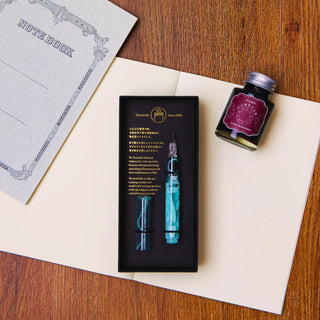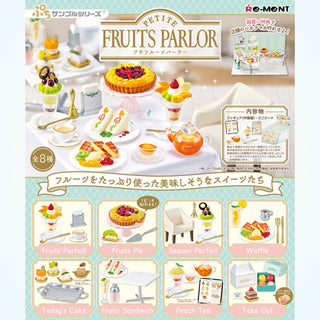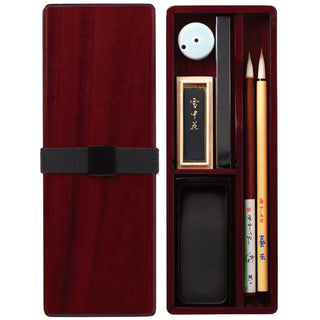
Notebooks have been a staple in our lives for centuries, serving as a reliable space for capturing thoughts, ideas, and important notes. Whether for work, school, or personal use, for many people who still prefer the feel of real paper in their hands, they provide an analog and often more peaceful escape in an increasingly digital world that often seeks to pull our attention in a million directions. This is why it is no surprise that beyond their traditional use, the humble notebooks can be transformed into a creative, organized, and functional tool to not only enhance productivity & as a form of self-expression for some but also as a safe space where one’s hidden thoughts can be kept safe and more importantly, remembered.
A direct quote from an article from the National Library of Medicine titled The Neuroscience of Memory: Implications for the Courtroom, “Memory is imperfect and is susceptible to distortion and loss.” Although our topic for today is incredibly less weighty compared to the research topic of the article, I do believe the sentiment about how unreliable our memory can be, still stands. This brings us back to the humble notebooks and their ability to change our lives.
Common Ways to Use the Notebooks:
1. Taking Notes
There are many different methods that scholars have used to take notes to aid their studies. Here are just some popular methods you might want to try:
-
-
Cornell Methods: this method was developed by a Cornell education professor, Walter Paul. This method provides a systematic format to organize your notes.
-
Mind Mapping Method: Created by Tony Buzan, the mind mapping method visually organizes information to enhance both record information and recall.
-
The Outline Method: A great method to adopt for more wordier topics. Breaking down bigger ideas into manageable little chunks.
-
We know that some subjects require more notes than others, so we recommend the Tsubame Fools University Notebook. With 3 different page amount options (30 pages, 60 pages, and 100 pages) you can adjust the number of sheets you need depending on the subject.
You also cannot go wrong with the iconic Campus Note or the Otona Campus Note, both with page amount options that can suit your every need.
2. Planning/ Daily To-Do List
A notebook used for planning or as a daily to-do tracker can act as your second brain. Consistently writing all the necessary information down is arguably one of the most foolproof ways to keep information organized and safe. If you are not using anything to jot down your notes at this moment, please take this as a sign to pick up a notebook and start jotting down the things that you need to remember in your day-to-day life. You will be surprised how much the benefit will compound over time.
For this, we recommend the Tsubame Fools Cream Memo Notepad. Its pocket size is perfect for carrying around, With its cream color paper (very soothing to the eye) and 3 different paper options: graph, plain, and ruled. Another great option is our Noble Memo Notepad.
3. Journaling
It’s common knowledge that journaling can have amazing benefits for your mental health. Not only are they a good way to improve your mood and calm your anxious thoughts, but there are other benefits like encouraging self-confidence and even helping you achieve your goals. Writing something down on paper provides you with a visual representation, that helps you form a plan that will keep you accountable. All that combined creates a higher chance of success!
We want to recommend our Noble Note Notebook. The beige-yellow paper color will help calm your nerves as you journal. With 100 pages available no need to fear that you’re going to run out of pages as you journal away your feelings, and ideas and plan for the future.
Creative Ways to Use the Notebooks:
1. Commonplace book
Is the practice of depositing knowledge and information that you came across and deem valuable into one book. The purpose of this system is to allow you to retain, visit, and fetch these ideas later when you need them. People like Virginia Woolf, Napoleon, and Bill Gates, are said to keep one in hand. Over time, you can build your bank of knowledge and information that is catered to your goals, needs, and things that you find valuable. If you’re keen to learn more about the commonplace book, this article might interest you.
The Tsubame Fools University Notebook H30S - Ruled (Lined) seems like the perfect candidate to dedicate as a commonplace book. With three different sheet amount options (30 pages, 60 pages, and 100 pages), you can choose one based on your needs.
2. Junk journal
It is said that the junk journaling trend can be traced back to the scrapbooking trend that came out during the 19th century. It is a practice where you combine journaling with memorabilia collecting into one. Remember that candy wrapper you had after visiting Universal Studio Osaka, which was too pretty to throw away, or that concert ticket you took with your best friend? Yes, add them to your junk journal
For this purpose, we recommend the ZUAN Sketchbook by Maruman. With four sizes available and thicker paper (compared to a conventional notebook that absorbs both ink & watercolors well, this sketchbook will be the perfect media to transform into your junk journal.
3. Bullet Journal
“The Bullet Journal method is a mindfulness practice that works like a productivity system.” is how its founder Ryder Caroll likes to describe the bullet journal (Bujo for short) on his website. With just a pen and an empty notebook, the bullet journal can help you track your schedules, reminders, to-do lists, tasks, brainstorming sessions, and more. Carroll differentiates his system into two: the Bullet Journal method (the System and the Practice). The System allows you to focus on what tasks you need to complete and help organize your thoughts, while the Practice on the other hand aids you in removing distractions and keeping your actions aligned with your goals and values. For bullet journaling purposes a lot of people gravitate towards a dotted or graph paper option because both the dots and squares provide guidelines in all directions when creating different types of layouts that will suit your needs.

From our collection, we want to recommend the F.O.B COOP - Ring B5 (Dotted) Grey 80 sheets. Its dotted paper allows you to easily create any organizational layout you want and with 80 sheets you can experiment with different layouts and find one that suits you best. Another option for this with graph paper is our Square Note Graph, with two different sizes available, you can make sure it fits your needs. It also lays completely flat, perfect for a large brainstorming session.
4. Morning pages
Morning Pages is a simple practice created by creative guru Julia Cameron. It’s a simple practice of starting your morning by writing (stream of consciousness style) on 3 sides of paper. You can write anything and everything you want or what comes to mind, as long as it fills exactly 3 sides of around an A4 size paper. It needs to be done first thing in the morning because “You're trying to catch yourself before your ego's defenses are in place.” A lot of people swear by this method as it helps empty their racing minds, allows them to be honest with themselves, and puts things that are floating in their heads, on paper.
As a safe space for your morning pages, we’d like to recommend the Campus Note - A4 size as it neatly complies with the recommended size of the morning pages notebook.

























